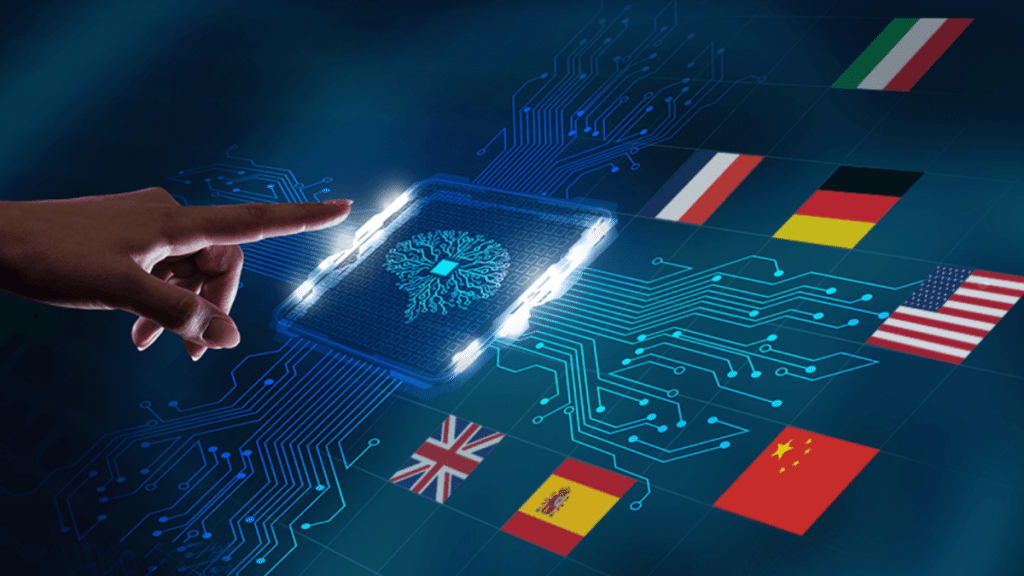Translation is one of the oldest professions, and we’ve been using technology to help us translate texts for centuries. But with the introduction of AI into translation, things are changing rapidly. Instead of relying on human translators, companies can now use machine learning to perform the task more quickly and accurately than ever before. Let’s take a look at how this new approach works!
Evolution of AI in Translation
AI is a subset of machine learning. It’s a set of algorithms that allow computers to learn from data and make predictions. AI is used in many applications, including translation.
The video translation service works by analyzing large amounts of content and then making predictions about what the user might want to see next or how they might want to interact with an app or website. For example, if you’re using an app that translates text between languages (like our own Translator). It will be able to identify when you need help translating something because it has seen this pattern before and then suggest relevant translations automatically!
AI-Based Video Translation Techniques
AI-based video translation techniques can be categorized into three types:
- Transcoding. This technique involves converting a video from one format to another. For instance, if your business has a lot of old videos that it wants to repurpose for new audiences. Then you will need to convert them from their original formats (e.g.,.mov) into something that’s more accessible today (e.g.,.mp4)). Transcoding is helpful when you want to use old material but update it with contemporary technology or add subtitles in different languages for different regions where your audience lives and works.
- Captioning/subtitling/narration translation). The second category involves translating the audio track of an existing piece of multimedia content into another language while preserving its original meaning as much as possible through careful selection of words used during narration or dialogue delivery
Benefits of AI in Video Translation
AI is a game-changer for video translation.
- AI can translate in real time. With traditional methods, you have to wait until the end of a video before you can see the translation. This is because humans are involved in the process, and they need time to transcribe and translate each clip before it’s ready for viewing. With AI-powered solutions, however, there’s no need for this step you can watch your translated content immediately after recording it!
- It doesn’t just cover words; it covers meaning as well. Most machine translation systems today focus on word matching (because that’s what computers do best), but what about context? What if two sentences mean different things depending on how they’re said? That’s where human translators come into play: they’re able to provide context clues that machines don’t always understand by themselves yet (and may never).
Challenges and Limitations
While AI can be a great solution for many translation problems, it’s not perfect. The technology still has limitations and challenges that need to be addressed before it can become truly useful in all situations. For example:
- While artificial intelligence is good at reading large amounts of text, it’s not always able to understand subtle nuances or complex concepts. This means that even if you have an accurate translation from your machine-generated translation service, this may not necessarily reflect the original meaning or intention behind what was written. This could lead to serious misunderstandings if the translated content is used as part of an important business decision (e.g., buying products).
- Machine translation systems also tend to struggle with longer documents because these require more time for analysis before producing results; therefore, machine translators will often produce slightly different results each time they are run against new documents due simply because there was insufficient processing time available during previous runs.[1]
Real-World Applications and Use Cases
- Automated caption generation
- Automatic translation of videos
- Automatic translation of audio
- Automatic translation of images
- Automatic translation of text (for example, web pages)
- Automated translations are also available in many other languages, including: Arabic and Chinese.
Future Trends and Innovations
AI’s potential applications are only limited by our imagination. It has the capacity to transform industries, create new jobs and improve people’s lives.
AI is already being used in many more areas than just translation and multimedia content. AI has been applied to healthcare, education, retail and financial services among others. The possibilities for AI are endless!
As technology continues to advance at an exponential rate, we can expect further innovation from companies that use AI in their products or services now or in the future. We may see these innovations sooner rather than later as well as wider adoption of these technologies across different industries around the world
Artificial intelligence will revolutionize the way we interact with other cultures.
AI is changing the way we interact with other cultures. It’s making it possible to translate video in real time, which means people can understand what’s going on in a foreign language without having to wait for a human translator.
This is a huge step forward because it gives us more freedom and flexibility when communicating with different cultures around the world. For example, imagine you’re traveling abroad, and you want to learn more about your host country but don’t know any of its languages. You could use your smartphone camera or tablet screen capture tool (or even just Google Translate) to get instant translations for whatever words or phrases pop up onscreen during your trip!
Conclusion
In conclusion, AI-based video translation is a powerful tool that will change the way we interact with other cultures and languages. It can be used to translate videos in real time, which means that there’s no need for humans to intervene when translating content anymore. This technology has many applications in various industries including tourism and entertainment; however, we still have a long way to go before it becomes mainstream due to some limitations like accuracy and cost-effectiveness issues.
